
How to Make Your Homemade Fishing Bait Effective: Tips and Tricks
Share
“Making your own bait is simple,” explains Ken Townley. “Here's how you go about it.”
What you’ll need:
First of all you'll need a decent sized saucepan and a well fitting strainer; something like a chip pan and strainer will do nicely. You will need a selection of tough, good-sized mixing bowls, and wooden spoons, spatulas and knives for mixing and cutting the paste prior to rolling. Measuring spoons of various sizes are essential for measuring out liquid flavours and attractors. I use a set of kitchen utensils bought specifically for bait making, as most carp bait additives very strongly and some are heavily pigmented.
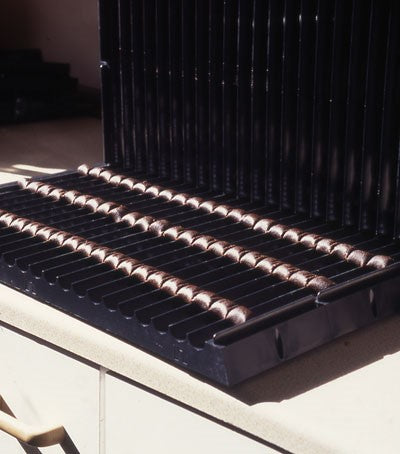
A cutting board is useful for rolling out bait sausages, but any flat, smooth, washable surface will serve the purpose. However, for the best sausages a rolling table is very useful. These bait tables should ideally be complemented with a bait gun which makes the whole process much more efficient and streamlined.
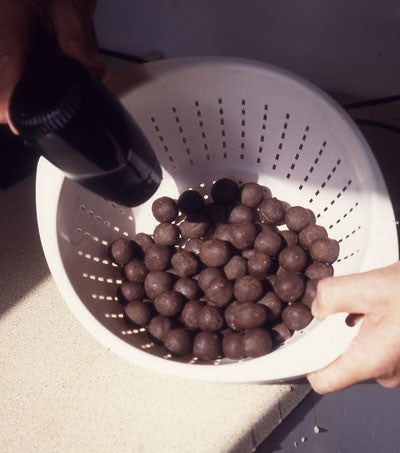
You'll also need a hair drier and a supply of either old newspapers, or discarded kitchen or bathroom towels for drying off the finished baits after they come out of the saucepan, and a set of simple kitchen scales for weighing out your ingredients in their correct quantities. Finally some freezer bags for storing the finished baits in the refrigerator or freezer until they are needed.
How to make boilies:
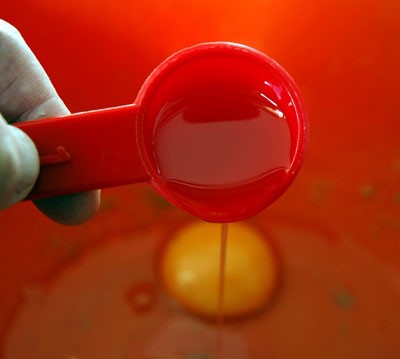
First break five or six large eggs into a bowl and add the flavour, sweetener and colour and any other attractors as required. The red liquid in the eggs shown in this photo is Liquid Robin Red. Remember not to exceed the recommended level of any attractor or you may end up making a bait that is actually repulsive rather than attractive. You will have to use trial and error to determine the correct number of eggs you will need to use as different base mixes require a variable number.
As a general rule of thumb four or five large eggs will cope with 500g of most base mixes. Whisk the eggs, colour and flavouring together thoroughly.
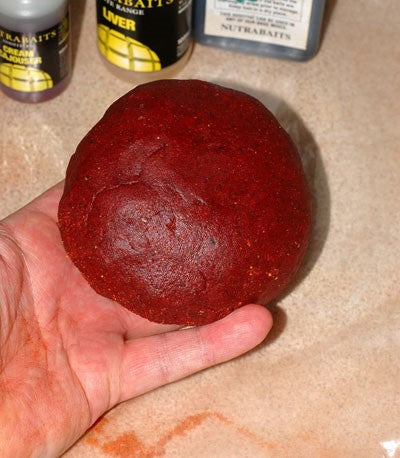
Now it's time to prepare the dry ingredients prior to mixing them with the eggs. Add 500g of either your own mix or any of the excellent proprietary mixes now available to the whisked eggs and flavours and knead until you have a round, fairly stiff ball of dough. You'll find it best to add the dry mix a bit at a time, using the wooden spoon to blend the wet and dry ingredients together.
As the mix thickens into a stiffer paste you will have to use your hands rather than the spoon to mix in the last bit of dry powder. You'll know when you have achieved the correct consistency because the ball of paste is easy to knead, and has lost most of its stickiness.
Continue to knead the bait for several minutes, as the longer you do this the easier your baits will be to roll. If you do encounter problems with the paste sticking to your hands, smear them with a vegetable oil.
If you've got a bait-making table or a Rollerball, you now need to make `sausages` out of the ball of paste, using either the rolling table provided or the extruding bait gun.
These sausages are then cut to a length to fit the rolling table. The sausages are then placed on the table 2 or 3 at a time and the baits are produced simply by following the operating instructions supplied.
Place the baits on a tray or other flat surface that has been covered with greaseproof paper. Once the whole big ball of dough has been processed the baits are ready for boiling.
If you haven't got a Rollerball you will have to roll the baits in the palm of your hand. With practice you'll be able to make three or four at a time. However, making boiled baits is a lot easier with a rolling table and a bait gun so these are worth buying.
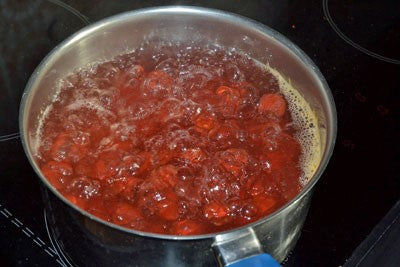
Now you are ready to finish off the baits by boiling them. Place about twenty in the strainer and immerse them in boiling water for the required time depending on how hard you want the finished baits to be. The longer you boil them, the harder they'll be which is useful when crayfish or bream are a problem.
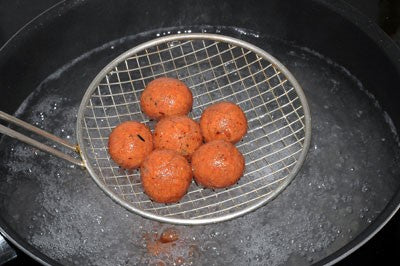
Don't put too many baits into the boiling water at once, as this will knock the water off the boil.
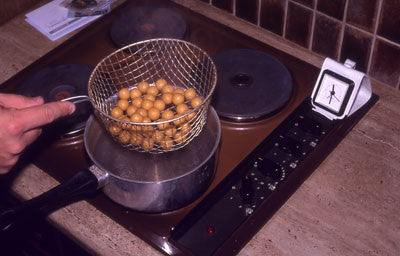
After they have been boiled, put the baits into a colander and apply heat from the hair drier. This drives off the surface moisture. However, the baits will still be warm inside and will sweat if you store them at this point. They need to dry out properly and cool down completely before you can bag and store them.
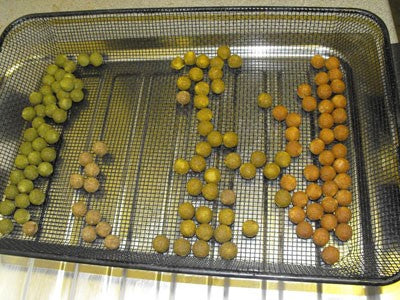
To do this place the baits onto a drying rack (I make mine out of a length of fine mesh chicken wire) or on a clean towel or newspaper. Leave them for at least two hours to cool and dry off completely and then the baits are ready for use.
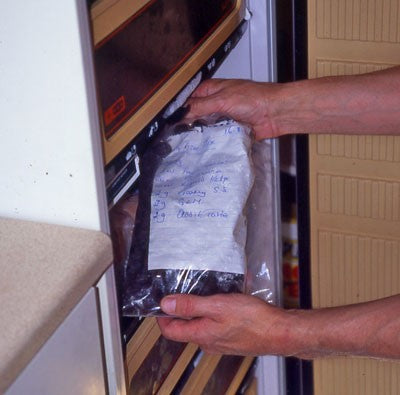
Alternatively you can store the baits by putting them into the freezer. Remember to label the bag with the date the baits were made and the flavour that was used.
Boiled baits don't necessarily have to be round:
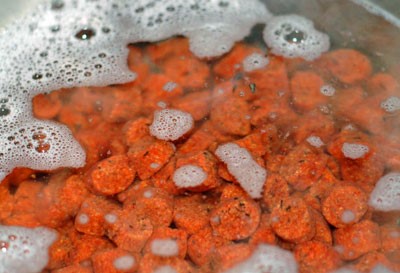
We only make them that shape so that they will go a long way out of a catapult or throwing stick. If you are fishing the margins or at fairly short ranges of up to about 40 metres you don't need to roll the baits into balls at all. In fact, in rivers round baits could even be a drawback, as the flow tends to take them out of the baited area.
For quick and easy boiled shapes I just boil the cut up sausages as they are, without bothering to shape them into round baits. Alternatively you can make sausages that fit into the pan, and boil the sausages complete.
The finished boiled sausage can then be cut to whatever size you require. This is particularly good for making mini-sized boiled baits. The very thin sausage shape is boiled for about 40 seconds and chopped into tiny pieces with up to 1500 particle sized boiled baits from a 500g mix.
Preparation tips and advice:
Finally, here are just a few general points that need to be remembered when you are making your own baits at home.
Pungent, unnatural smells such as cigarettes, and carp baits do not go together. If you are a smoker make sure your hands are clean and no taint of cigarettes lingers on them. The same applies to other odours such as soap, petrol or engine oil.
Clean the cooking and mixing utensils thoroughly after use. You may think that they are only going to be used for making baits for stupid fish that aren't worried about kitchen hygiene, but bacteriological contamination may make your baits absolutely useless due to unhygienic procedures.
Storing homemade boilies:
Make sure the baits are completely cold before putting them into the bag ready for the freezer. Warm baits cause condensation to form on the inside of the bag, which turns to ice and `burns` the baits during freezing. For the same reason make sure you draw as much air as possible from the bag before you seal the bag and pop it in the freezer. A very useful item is a heat sealer, which forms a neat airtight seal on polythene bags.
You can keep baits for quite long periods out of the fridge or freezer, but remember that the enemy of all boilies is dampness or atmospheric moisture. A handful of uncooked long grain rice, added to a bag of boilies, will absorb a large amount of moisture and keep the baits in good condition.
Written by Ken Townley.
